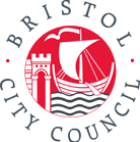The Bristol Self-Harm Surveillance Register: the first ‘real time’ register in the UK
Salena Williams, Senior Nurse in the Psychiatric Liaison team at the Bristol Royal Infirmary, writes about the creation and development of the Bristol Self-Harm Surveillance Register. Salena is also a Director of the Improving Care in Self-Harm Health In
- 25th May 2018
Salena Williams, Senior Nurse in the Psychiatric Liaison team at the Bristol Royal Infirmary, writes about the creation and development of the Bristol Self-Harm Surveillance Register. Salena is also a Director of the Improving Care in Self-Harm Health Integration Team (STITCH HIT). This blog is part of the Bristol Firsts series, celebrating Bristol-based innovations in the NHS’s 70th year. If you have an idea for a Bristol Firsts blog, get in touch with Zoe Trinder-Widdess on [email protected].
How collecting data has improved nursing care and patient experience
Self-harm is a huge public health issue. Self-harm, when people intentionally injure themselves, accounts for around 200,000 A&E attendances each year. Up to a quarter go on to repeat self-harm in the next 12 months.
It’s also strongly associated with suicide. A fifth of all suicides attend A&E for self-harm in the year before their death and over a third of all suicides have a history of self-harm. So when people come to A&E after self-harm, we have a golden moment to prevent suicide.
I am a Senior Nurse in the Bristol Royal Infirmary (BRI) and a Director of the STITCH Health Integration Team.
Since 2008 when I moved to Bristol to work in the BRI, I’ve been a member of the Bristol Suicide Prevention Group along with public health colleague Christina Gray and Professor David Gunnel of Bristol University, an international expert in suicide and self-harm. This group monitors suicide in the city.
As it’s the highest risk factor for suicide above all others, we were compelled to do something to impact self-harm in our local area. But we couldn’t do that without knowing the size of the issue.
Christina, myself and David were all passionate about making a change. We recognised that we were missing opportunities to help vulnerable people who were coming through the doors at A&E. The Bristol Self-Harm Surveillance Register was our way of understanding what’s going on with these patients and seeing patterns that could help us save lives. Overcoming financial obstacles (and despite financial difficulties being an annual feature!), we set up the register in September 2010.
The register is a database where we record detailed information on patients who’ve come to any Bristol hospital having self-harmed. It allows us to monitor rates and patterns of self-harm, including the risk factors that indicate if someone’s going to repeat self-harm or attempt suicide. We can also monitor which medicines people use to take an overdose.
All this information is vital for informing our local prevention efforts and contributing to the work of STITCH. In the seven years since we started the register, we’ve expanded it to Southmead Hospital and Bristol Children’s Hospital. We have two full-time auditors who collect and upload the data.
The register has shed light on so much that has helped inform our local suicide prevention strategy. Fifty-seven people who presented for self-harm at the Bristol Royal Infirmary between 2011 and 2015 have gone on to die by suicide, based on coroners’ notes. Thirty per cent of these people died by hanging.
The proportion of people receiving a psychosocial assessment was 20 per cent lower with self-injury compared to self-poisoning. And we’ve seen that self-harm maps almost perfectly onto Bristol’s areas of deprivation.
So what have we changed as a result of all this intelligence? We’ve improved the experience of people attending A&E after they’ve self-harmed, and created resources like a Z-card with information on how visits to A&E work, and details of helplines and support.
We’re campaigning hard to change the law on GP prescribing of medication that’s dangerous when taken in overdose. We’re working with GPs to increase their awareness of self-harm and to create better pathways between hospital and home.
Personal support plans are another resource we’ve developed, to stop patients having to tell their story every time they visit A&E or see a different healthcare professional. These plans are developed with self-harm patients and are available at reception when the patient arrives.
Our Bristol Self-Harm Surveillance Register has inspired other registers in Bath and North East Somerset, North Somerset and Swindon. Imitation is the sincerest form of flattery, and I am proud that I was part of making this lifesaving register become a reality.






